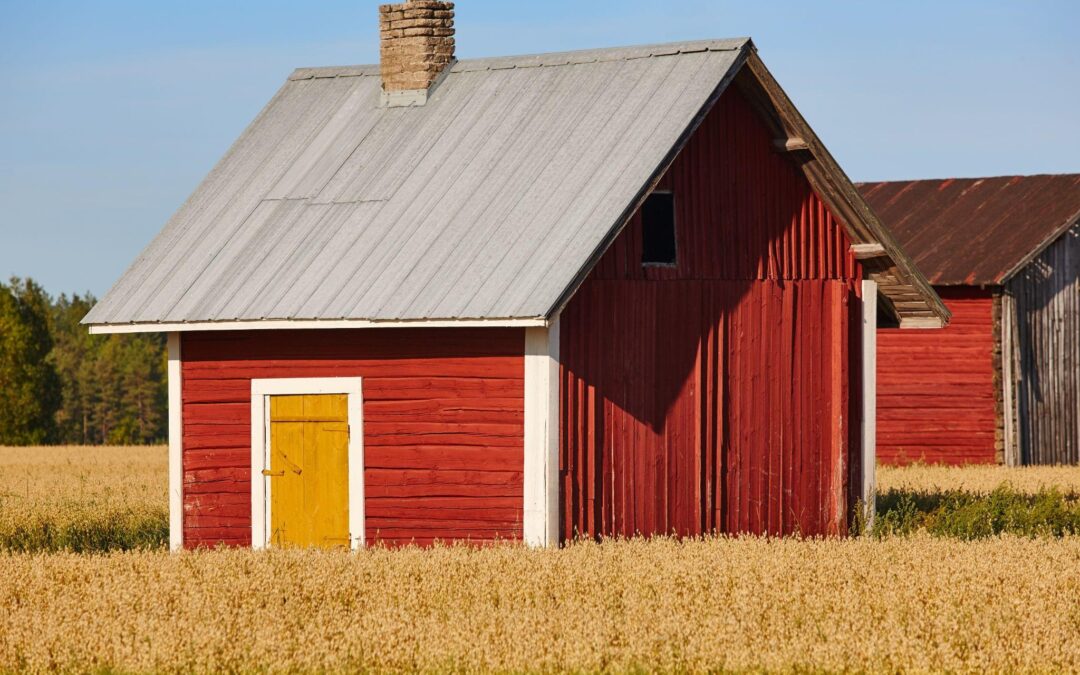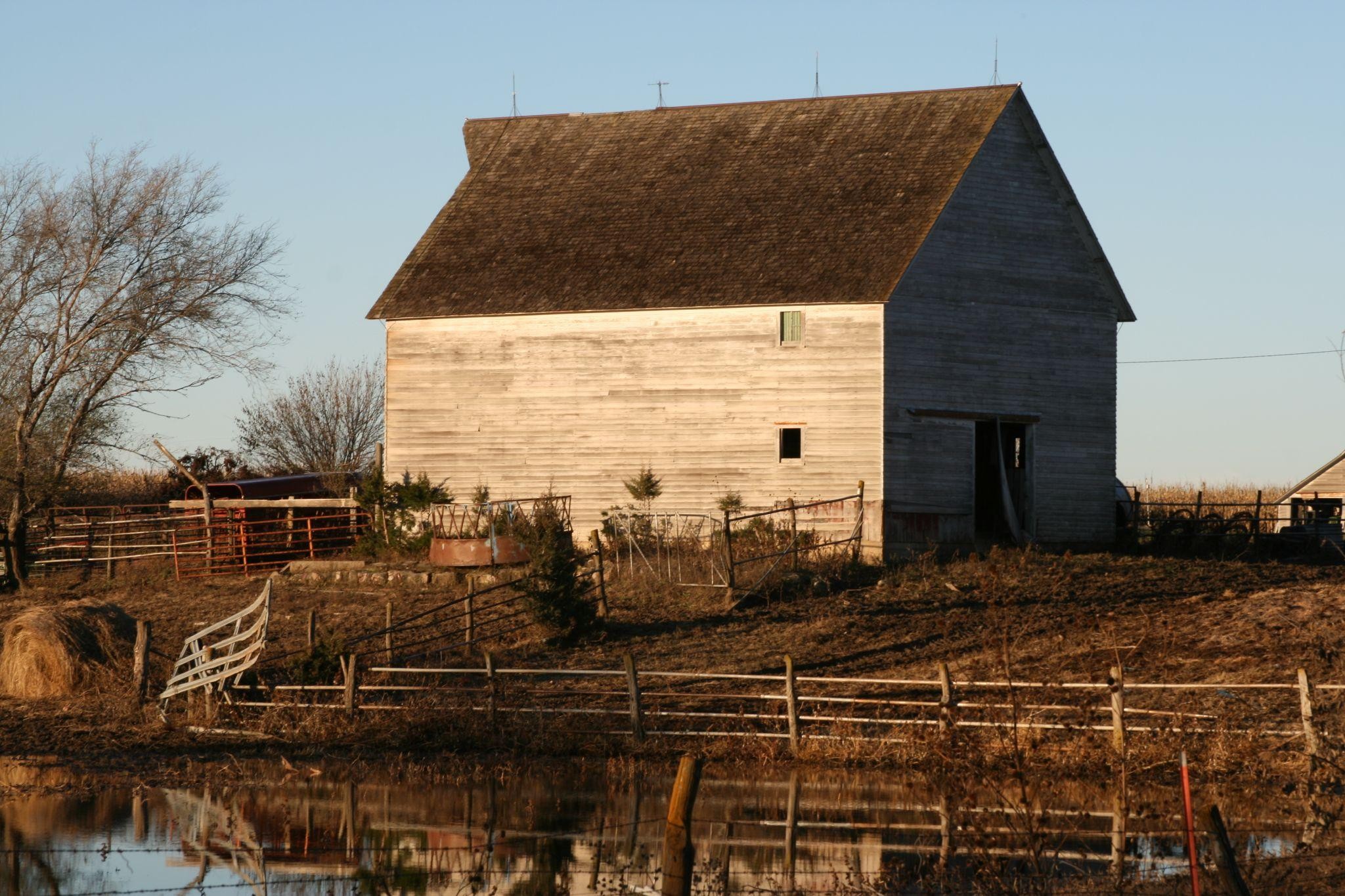The color you choose for your barn should do more than look good. The right paint plan protects original wood, manages moisture, and helps your barn keep its true character for years.
This article will discuss barn color ideas that suit New York barns. It will also discuss why breathable finishes are important and the necessary repair steps to take before any paint work.
We’ve spent more than 50 years restoring barns across New York, and we want to share what we’ve learned in clear, simple terms.
Why Color Choice Is Part of Preservation and Not Just Aesthetics
Color and finish work together to protect wood. Light, stable colors can reduce heat gain and surface stress. On the other hand, the right finish lets vapor escape, so boards do not stay wet after rain.
Think of your barn’s color as part of a “system” that starts with sound structure and solid prep. Paint cannot hide rot, fix movement, or seal a leaking roof.
First, make the barn healthy; then the color and finish will last. Our restoration work in New York starts with the structure. We assess and fix issues first, so any paint system has a solid base.
What Counts as “Authentic” in New York?
Across New York, many historic barns wore deep reds, earthy browns, and off-whites. These colors came from practical roots:
- pigments that were easy to get
- finishes that helped shed water
- and tones that matched working farms
Authenticity is not a trend. Pick a palette that fits your barn’s time and place.
Look for clues in your own structure. Check protected spots under eaves or behind old hardware for original layers.
Note the siding species and age. Authentic choices are the ones that work with the story your barn already tells, not against it. When in doubt, match the era, not the latest trend.
Prep Before Paint: Repair First, Then Finish
Good paint jobs are built on good repairs. Start by checking the following:
- bowing walls
- soft or rotted boards
- loose fasteners
- and any leaks from the roof or flashing
Tighten what must be tight, replace what cannot be saved. And make sure doors and windows shed water away from the siding.
Straightening, bracing, and other structural fixes should come first. Paint locks in success, but it can also lock in problems if the base is weak.
Once the structure is sound and dry, sanding, spot-priming, and careful caulking can prepare the surface for a durable finish.
Breathability Matters (Finish Types, Explained Simply)
Wood barns need to breathe. Non-breathable coatings can trap water vapor inside boards, which speeds up decay and pushes paint off the surface.
Uncontrolled moisture is the leading cause of deterioration in historic buildings. This is why finishes and details that let assemblies dry are critical.
Many historic barns used oil or oil-like paints and stains. Today, there are modern breathable systems and traditional options that respect old wood. Stains and lime-wash style finishes can also be useful in the right setting.
Match your finish to site conditions. Wind, shade, and splashback change how coatings age. When the goal is preservation, breathability, and maintenance are as important as color.
New York Climate Considerations for Color & Longevity
Our climate swings hard. Freeze–thaw cycles, summer humidity, and strong UV all affect paint life. The way coatings handle moisture affects long-term performance. That is why breathability matters in a humid, four-season climate.
Plan your work with the weather in mind. Dark shades on sun-facing sides can run hotter and may stress wood that already moves with the seasons.
Lighter, historically consistent tones can reduce heat gain and help coatings stay flexible. With smart timing and a compatible color and finish, your coating has a better chance to cure well and last longer in New York’s conditions.
A Simple, Preservation-First Color Selection Process
Before you reach for swatches, take a calm look at the whole structure. A short, steady barn restoration process will help you choose well and avoid rework.
- Inspect the structure and the building envelope for movement, leaks, and rot. Fix issues first.
- Identify original or compatible color families based on visible layers and your barn’s era.
- Confirm that your planned finish is breathable and that you understand its upkeep.
- Test a small, hidden area for adhesion and appearance before painting wide areas.
- Plan a realistic recoat and maintenance cycle that fits your exposure and use.
For a bigger plan that blends preservation with updates, consider barn renovation in New York.
When to DIY vs Call Pros for Barn Restoration Near You
Many homeowners can handle small, sound-surface touch-ups. You might sand, spot prime, and refresh color on a tight, dry wall and feel proud of the result.
When to Google “barn restoration near me“:
- You see structural movement
- widespread rot
- or signs of water getting behind the siding
In New York, an on-site check helps you understand what repairs and prep should come before any paint choice. A pro can check structure, siding, moisture paths, and previous coatings, then plan the fixes so your color and finish succeed.
Good planning protects the wood you already have and respects the history you want to keep.
Common Mistakes to Avoid (Quick Checklist)
It helps to know what not to do. These are the errors we see most often on historic barns.
- Skipping repairs and trying to “paint over” problems.
- Power-washing too hard, which drives water into joints and leads to peeling.
- Using non-breathable coatings on old wood.
- Ignoring roof and gutter issues that stain and age finishes fast.
- Painting outside of the right weather window for the product.
A little restraint goes a long way. Slowing down to prep right will pay you back with fewer failures and fewer premature repaints.
Before You Pick a Color, Read the Wood (A Friendly Send-Off)
Start with a preservation-first assessment. Look at the structure, siding, moisture paths, and old coatings. A clear view of the barn’s condition will guide every choice that follows, from color family to finish type to timing.
If you are in New York, request an on-site review with Woodford Barn Repair.
We will help align color and finish with your barn’s era and condition, and plan the steps that make paint last. With the right plan, your barn can stay true to itself and stay protected for years.


